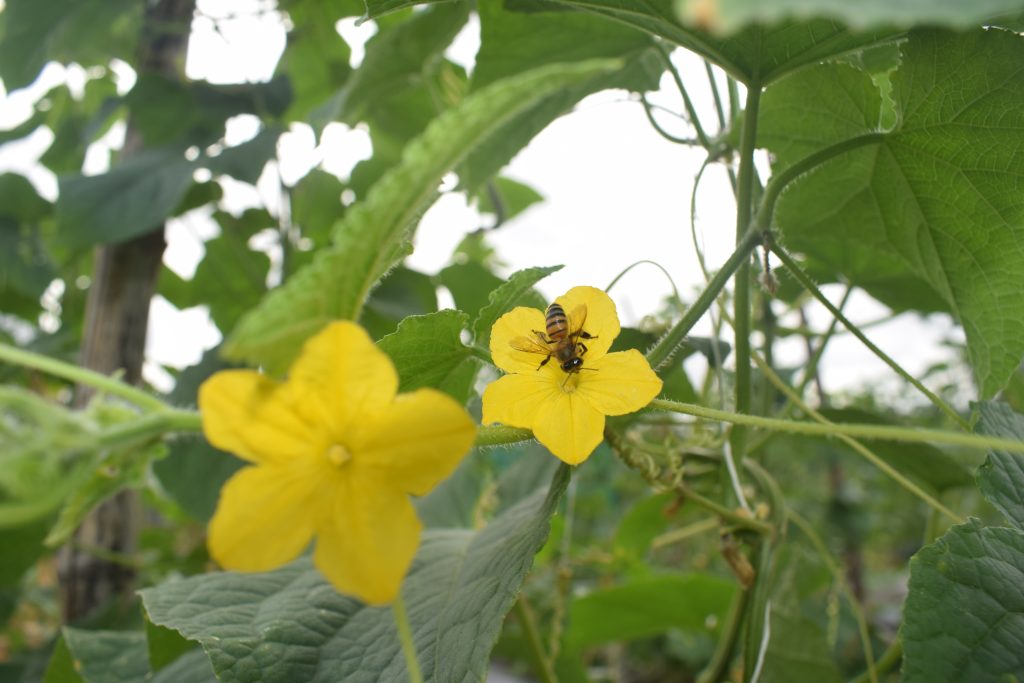
Building a food secured Africa

Building a food secured Africa

“Pollination is the transfer of pollen grains from the anther of a flower to the stigma of another flower…blah blah blah” Do you remember this recitation at Elementary Science? We played around it then just to make it sink. Let me explain a little bit. Pollination is simply the transfer of pollen grains from the anther (male part) of a flower to the stigma (female part) of same plant (for plants producing both male and female flowers) or to another plant (for plants producing just one sex flower). Pollination can be effective for seed bearing plants by the help of pollinators which are birds, bats, butterflies, moths, flies, beetles, wasps, small mammals, and mostly bees. Many think bees are the only pollinators whereas there are many other pollinators we don’t take note of. Pollination is very important as without it, plants can’t produce fruits or pods and we can’t have food. It is therefore an issue of concern when we plant and our farm is filled with arrays of blossoming flowers and there are just a few or no visiting pollinators coming around. Pollinators can be repelled in many ways as well as attracted too. Thus, it is necessary we know how we can attract them.
Most crops are either self-pollinated or rely on wind for pollination, while some really need the intervention of pollinators like bees, butterflies, hummingbirds to produce well. While most leaf vegetables we plant like cabbage, lettuce, do not require pollinators to produce, root bearing crops like carrots, potatoes etc. don’t either. Crops like cucumber, tomatoes with heavy blossoms as well as pepper require the intervention of pollinators to produce fruits well. Although pepper is self-pollinating it can produce more fruits if pollinated by bees. Bees are attracted by flowers either by the color or smell of such flowers etc.
We can now begin to analyze some of the simple but effective ways we can attract these wonderful benefiting creatures to our farm garden. We must first understand that as much as we want an open, neat field to farm our crops, we also need to consider certain factors surrounding our farm. If we site a farm in the centre of a forest or bushland, we can check around to study the native shrubs, trees, flying insects or even birds. Preserve some of the trees that are seen to have good flowers that attract bees, butterflies, etc. this will keep them around the farm. This also goes to the native plants around that have nectar-laden flowers that can attract bees, butterflies, or hummingbirds. You can provide a breeding ground for most nest-making honey bees by heaping compost or having some cleared bare soil around where they can bore and build nests for proliferation. Keeping dead or fallen trees around can also serve as shelter for these native bees or honey bees. While going further to plant some desirable plants around like marigolds, sunflowers, daisy flowers etc. can help to attract some pollinators to the farm.
Preserve some of the trees that are seen to have good flowers that attract bees, butterflies, etc. this will keep them around the farm
It is important to note that these pollinators respond to different colors. Bees like blue, yellow, white and purple. Butterflies prefer red and purple flowers. Hummingbirds are attracted to red tones first before any other. In planting your flowers around, you plant those that bloom at different times and also have different shapes of blossoms to attract varieties of pollinators. This also means you can mix up crops in your farm for example; if cucumber is your major crop, you can plant a little bit of tomatoes, pepper and corn. This is a way of diversification that can help to attract different pollinators to your farm.
Most pollinators love to sip on any available water around. You can attract them to your farm by having water in places accessible to pollinators like open field reservoirs, dripping tanks or pipes that do not necessarily affect your productivity.
The use of chemicals in farm management is also to be considered. Try as much as possible to use pesticides, herbicides or foliar fertilizers wisely so as not to repel pollinators from your farm. If you must spray, target times when pollinators like bees are not around and follow the prescription on the label before application. You don’t want to spray highly concentrated chemicals that will choke and send pollinators away. Try out times like early hours of the day or late afternoon and likewise at late evening to spray whatever you want to spray.